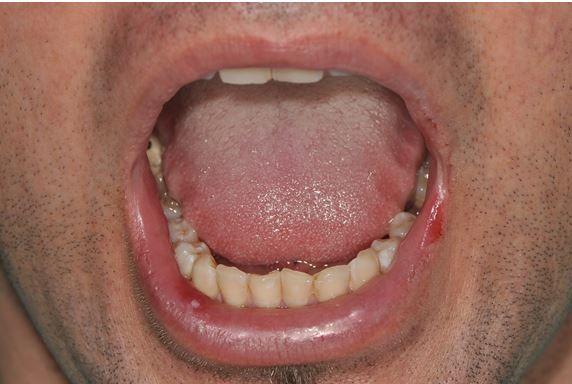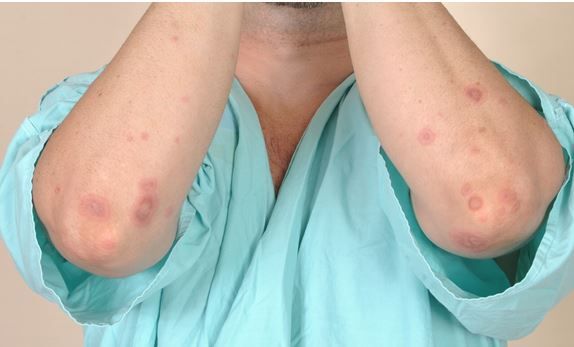Herpes-Associated Erythema Multiforme
This self-limited albeit recurrent condition is often triggered by antigenic stimuli, including infections, most often HSV, and medications.
Figure 1. Orolabial erosions. (click to enlarge)

Figure 2. Tender dermal plaques. (click to enlarge)

A painful rash developed on the elbows, knees, lower back, and buttocks of a 39-year-old man in conjunction with a cold sore on his lip. He had a history of several similar outbreaks on his lips, one of which was associated with blisters on his genitals. He was otherwise healthy and took no medications.
Key points: Examination revealed groups of small vesicles and erosions on his orolabial mucosa (Figure 1) and tender plaques on his elbows, knees, lower back, and buttocks, each with 3 zones: a grayish vesicle within an edematous, dusky purple area surrounded by a peripheral pink patch (Figure 2).
The differential diagnosis included herpes-associated erythema multiforme, Rowell syndrome, and linear IgA dermatosis.
A swab for herpes simplex virus (HSV) direct fluorescent antibody from the orolabial erosions was positive, confirming the diagnosis of recurrent herpes-associated erythema multiforme.
Treatment: Given the frequency of his skin disease, he was treated with valacyclovir 500 mg twice daily as suppressive therapy. His oral sores resolved within 4 days, and his rash resolved shortly thereafter.
Note: Erythema multiforme is a common, self-limited albeit recurrent condition often triggered by various antigenic stimuli, including infections, most often caused by HSV, and medications. Reactions to Mycloplasma pneumoniae with sloughing of the ocular, oral, and genitourinary mucosae have been reclassified as “Mycloplasma-associated mucositis” rather than erythema multiforme or atypical Stevens-Johnson syndrome.